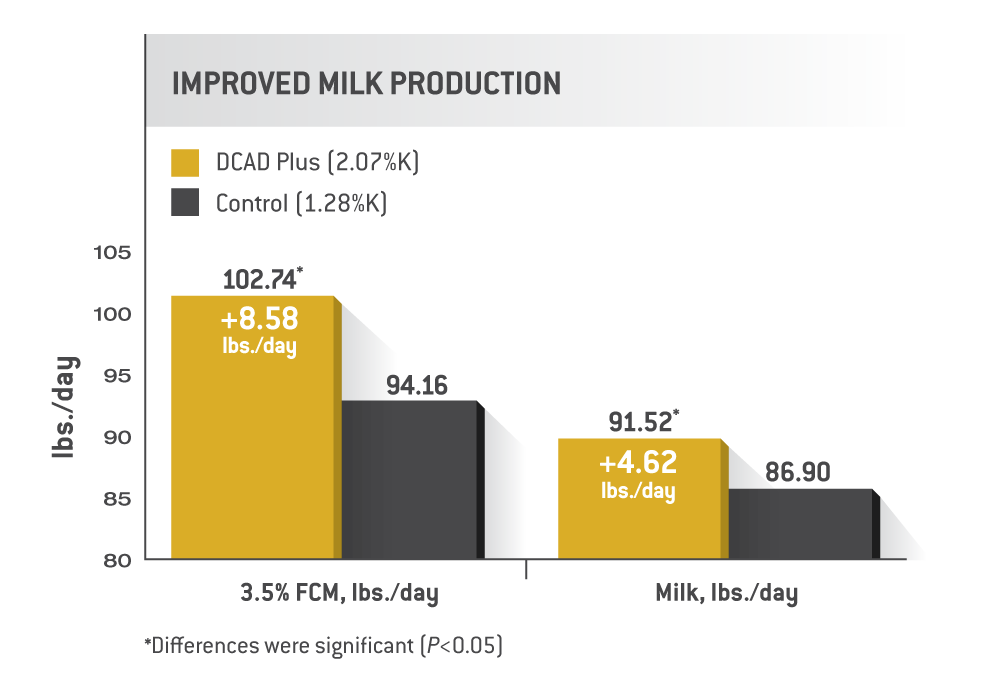
Winning the DCAD balancing numbers game.
Dietary Cation-Anion Difference, or DCAD, may be a mouthful to say, but it’s an essential number to know—and properly address—in the rations of your dairy cattle. Understanding the proper balance will go a long way to achieving optimal performance from your herd, both prepartum and postpartum.
When going negative delivers positive results
“Formulating prepartum dairy cattle diets for negative DCAD is a solid, research-proven approach,” according to Ruby Wu, ruminant technical service manager with ARM & HAMMER™. “Studies have repeatedly proven that feeding negative DCAD prepartum can help mobilize calcium at calving and decrease postpartum metabolic disorders, such as milk fever, retained placenta and uterine diseases. Postpartum feed intake and milk production also benefit from this prepartum feeding regimen.”

Specifically, feeding a ration with negative DCAD of -8 to -12 meq/100g ration dry matter for the final three weeks prior to calving can help prevent a rapid decline in blood calcium around calving, and improve cow health and performance in the subsequent lactation.1
The ideal postpartum DCAD balance
Postpartum dairy cattle diets balanced for positive DCAD can help these cows achieve their full potential by replacing some of what’s lost through increased milk production.

The optimum DCAD range to neutralize the blood acid load caused by greater milk output is typically +35 to +45 meq/100g dry matter. Adding potassium often helps the diets of all postpartum cows, especially top producers, reach this ideal positive balance.
How to find (and keep) your balance
When balancing rations for DCAD Wu stresses several important steps, starting with wet chemistry analysis of feeds for Na, K, Cl, S and Mg levels. This analysis should include both forages and byproduct commodity feeds, such as whey and molasses, that typically have variances in DCAD minerals.
Trusting in book values alone fails to account for large variability among feedstuffs. Wet chemistry analysis is the only way to know the exact DCAD levels of your feed ingredients and forages.
Learn the additional steps for negative DCAD balancing in dairy cattle diets here and for positive DCAD balancing here.
Some help getting negative or staying positive
Two products from ARM & HAMMER can help you achieve the ideal DCAD balance for your prepartum and postpartum cattle.
BIO-CHLOR™ delivers the negative DCAD required to steadily acidify cows. It is the only consistently formulated, palatable anion source that also optimizes metabolizable protein and drives rumen-supporting bacterial growth.
DCAD Plus™ gives cows the potassium they need without adverse ration heating or the negative effects of chloride. Feeding it every day of lactation, and especially during warmer weather, helps maintain positive DCAD levels.
READY TO LEARN MORE?Want to learn more about what our #ScienceHearted team can do for your operation? Fill out the form below and one of our experts will be in touch shortly. |
1. Santos JEP, Lean IJ, Golder H, Block E. Meta-analysis of the effects of prepartum dietary cation-anion difference on performance and health of dairy cows. Journal of Dairy Science; 2019; 102(3):2134-2154.





